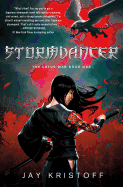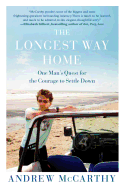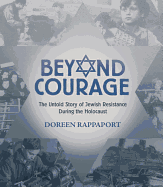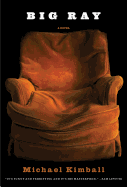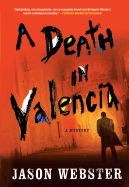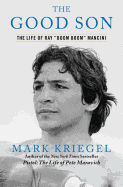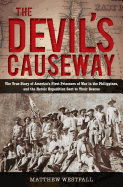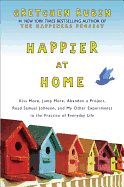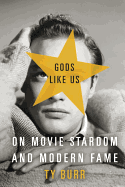Everybody knows booksellers love to read books; it's basically the job description. That they sometimes love to write books, too, is perhaps less apparent, but I was happily reminded of this fact recently during a panel called "Books: We Sell Them & We Write Them!" at an independent booksellers trade show in Florida.
The realization has launched what I'd have to call my Season for Reading Booksellers, which had already gotten off to a fine start not long ago with the novel Laura Lamont's Life in Pictures by Emma Straub (Riverhead), who works at BookCourt in Brooklyn.
During the Florida panel, Wendy Welch--co-owner of Tales of the Lonesome Pine Bookshop, Big Stone Gap, Va., with her husband, Jack Beck--talked about the adventures and misadventures of launching their biblio-dream life, which she chronicles in her delightful new book, The Little Bookstore of Big Stone Gap: A Memoir of Friendship, Community & the Uncommon Pleasure of a Good Book (coming from St. Martin's October 2).
Maureen D. Lee, another panelist and former owner of Lee's Book Attic, Columbia, S.C., shared highlights from the extraordinary life of a distinguished turn-of-the-century African American soprano who is the subject of her book, Sissieretta Jones: "The Greatest Singer of Her Race," 1868-1933 (University of South Carolina Press).
And then there was Cliff Graubart, who gained national fame a few years ago when he and his Old New York Book Shop were featured in Pat Conroy's My Reading Life. "He wanted me to succeed," Graubart observed regarding his longtime friendship with the author.
Conroy "believes everybody should write; everybody has a novel in them," said Graubart, whose engaging new collection, The Curious Vision of Sammy Levitt and Other Stories (Mercer University Press), fulfills one of his own biblio-dreams.
Have you read any good booksellers lately? --Robert Gray, contributing editor, Shelf Awareness
Between Heaven and Here
by Susan Straight
Susan Straight has explored the fictional landscape of Rio Seco, Calif., for more than two decades, and while each of her novels can stand on its own, many characters make recurring appearances. Between Heaven and Here continues the stories of the Sarrat families from A Million Nightingales (2007) and Take One Candle Light a Room (2010); the events in this third novel precede those in Take One Candle... by five years. These novels constitute a trilogy by virtue of people and place, rather than plot.
Tied together by blood, marriages and the enclave they'd established across the canal from the city and named for their Louisiana hometown, the Antoines and Picards are both well-known and set apart in Rio Seco, none more so than Glorette, the most beautiful of the Sarrat girls. Sadly, that beauty has never gotten her much more than a teenage son and a crack addiction; now, on the eve of her 35th birthday, it may have gotten her murdered. This is a family matter: after all, will anyone else care about the death of a streetwalker whose body was found in a shopping cart in a back alley?
Between Heaven and Here recounts the days surrounding Glorette's death, the search for her killer and family history from the perspectives of many members of her family. Straight knows her landscape well and renders it vividly. She has created an affecting world in Rio Seco and, even as she brings this story to a close, one hopes she has many more to tell. --Florinda Pendley Vasquez, blogger at The 3 R's Blog: Reading, 'Riting, and Randomness
Discover: The effects of loss on a family with deep and tangled roots in a California desert town.
San Miguel
by T.C. Boyle
T.C. Boyle returns to California's barren, sea-sprayed Channel Islands--the setting of 2011's When the Killing's Done--in San Miguel, a novel that finds Boyle on his strongest turf: meticulously reimagining real historical lives through luxuriant prose, delivering full and vibrant characters in stories that gently crescendo into heartbreak and resolution. San Miguel is written so beautifully and is so word-perfectly exquisite, in fact, that it may be his most satisfying novel to date.
Inspired by the real-life experiences of two families who, in the late 1800s and 1930s, respectively, attempted to make a go of sheep farming on San Miguel, Boyle delves into the lives of three women for whom the island functions as both liberator and imprisoner. One is a consumptive wife who watches with sadness and alarm as she realizes her family is already planning for life without her; another, a teenage girl whose adolescent angst is amplified by the confines and wildness of the island; finally, a late-to-love newlywed whose ecstatic embrace of the island as idyllic love nest fades as her husband's mercurial moods intensify.
Each of these lives is beautifully and respectfully resurrected in Boyle's careful, elegant prose. And though Boyle's San Miguel is a harsh and lonely place, San Miguel is such an inviting and absorbing novel readers will be sorry to leave it. --Cherie Ann Parker, freelance journalist and book critic
Discover: An exquisitely written historical novel set on one of California's barren Channel Islands.
Big Ray
by Michael Kimball
In Michael Kimball's taut Big Ray, Raymond Carrier's body, all 500 pounds of it, is found when the rent is overdue and newspapers begin to pile up on his doorstep. His son, David, and his sister must remove what's left of Big Ray's life. The apartment tells the story: stained carpet, 1950s Coca-Cola memorabilia, photographs of long-past happier times, pornography and the "smell of death," as Kimball describes, "mixed with my father's particular body odor, which was sharp and bitter but also had a faint sweetness to it."
With simple, declarative, almost diary-like paragraphs, David narrates the life of his father. Big Ray's contribution to his marriage and family life was 35 years of relentless verbal and psychological assault. His early sarcasm toward his son turned to physical violence; demand for proof of his daughter's love became sexual abuse. He grew isolated and obese, his assault turned on himself. "My father wasn't what he wanted to be," David calmly observes as he combs through his father's personal effects. "My father wasn't what I wanted him to be either."
Surpassing the simply grotesque, Kimball's story takes on something of a redemptive, Job-like intensity. Despite the unsparing picture that emerges from Big Ray's personal detritus, David can't quite shake the loss: "I still don't like my father, but I still miss him." Kimball's short, bleak novel may not tell a pretty story, but it is a well-told story that is not easy to forget. --Bruce Jacobs
Discover: A stark but sensitive story of the difficult relationship between a son and his recently deceased abusive father.
Mystery & Thriller
A Death in Valencia
by Jason Webster
In Jason Webster's second novel, A Death in Valencia, Detective Max Cámara deals with a murdered paella chef and a kidnapped abortionist while his world literally falls in around him--his apartment complex collapses, killing his young neighbor and her toddler son.
With no where to live and no family to speak of, Cámara forces himself to focus on his job in order to counter the pull of depression and self-loathing creeping into his life. But the politics enveloping both the murder and the kidnapping may prove to be more than Cámara can battle.
Set in Spain, Webster's plot, with its themes of corruption in construction and the moral debate surrounding abortion, could be easily relocated to almost any developed nation. Webster carefully dances around the abortion controversy, forcing his protagonist to struggle with both perspectives. The relevance of such themes will help readers easily identify with Cámara's plight and cheer him on despite his flaws and shortcomings.
Cámara's likability is also enhanced by his relationship with his partner Paco Torres. Cámara is technically Torres's superior, but their interactions take on a brotherly air of easy banter, support and respect.
Readers new to the series may find Cámara's relationship history a little harder to follow, but this lack of knowledge doesn't disturb the overall flow of A Death in Valencia. Spanish words and phrases throughout, though, seem like language lessons, as every occurrence is translated into English. Eliminating what couldn't be interpreted from context would have removed significant diversion from the plot. --Jen Forbus of Jen's Book Thoughts
Discover: Was the murdered chef's paella truly to die for? Jason Webster's second novel delves into some of modern Spain's most explosive controversies.
Science Fiction & Fantasy
Stormdancer
by Jay Kristoff
Other reviewers might call Jay Kristoff's debut novel a fresh, imaginative take on the steampunk subgenre. Don't be fooled. In truth, Stormdancer boasts a fairly standard plot line: girl takes ill-advised journey on airship, girl meets angry Japanese griffin, girl tries to ride angry Japanese griffin off of sinking airship. Okay, that's pretty original.
In case it's not immediately obvious from the above plot summary, Stormdancer features a young, precocious girl and a flying eagle-tiger hybrid as its protagonists. By turns violent and endearing, their escapades through a Japanese-influenced steam society provoke laughter and tears on the order of any good girl-and-her-dog story. Think Lassie, if Kurosawa had been the director and Lassie had been three tons of angry mythical demon-shredding sass bent on pushing Timmy down the well. Okay, that's nothing like Lassie.
Kristoff's world-building doesn't pull any punches, either. The nation of Kigen's chief power source is a pollutant that has drained almost all of its natural resources and doubles as a cripplingly addictive opiate. The industrial revolution has left ecological and social devastation in its wake. Add a brutal caste system and a fuel-producing syndicate run by religious fanatics. Result: a terrifyingly plausible dystopia.
A colorful cast of supporting characters and thoughtful plotting add further to Stormdancer's appeal, but, really, Kristoff has the reader at "girl meets griffin." The captivating backdrop, graceful prose and army of mechanized samurai are all just added bonuses. --Katie Montgomery, book nerd
Discover: A strong, sword-wielding heroine and a wise-cracking Japanese griffin set out to save a dysfunctional society.
Biography & Memoir
The Good Son: The Life of Ray "Boom Boom" Mancini
by Mark Kriegel
Warm, likable and polite, Ray "Boom Boom" Mancini was everyone's favorite boxer in the early 1980s. The lightweight champ's story--he fought to fulfill the dreams of a father whose career had been cut short by a war injury--made for great TV, and his handsome, Italian-American features offered the public a real-life Rocky Balboa. But a pall was cast over his career and, ultimately, over boxing itself when South Korean fighter Duk Koo Kim died from injuries sustained in a 1982 title fight with Mancini.
In The Good Son, Mark Kriegel, a sports journalist and author of biographies of Joe Namath and Pete Maravich, balances the intrinsic drama of Mancini's story with a graceful, contemplative tone that examines how Mancini went from a lovable sports celebrity to a symbol of boxing's brutality. Kriegel takes the reader back through the generations to see where Mancini got the fortitude to endure in the ring, but avoids hero-worshipping or mythologizing a fighter who by all accounts had solid, but not extraordinary, talents. Instead, The Good Son reveals a remarkably human guy whose rise--and fall--resulted more from vagaries of fate and circumstance than superhuman drive or destiny.
Kriegel offers a welcome chapter on Kim--whose own hardscrabble upbringing dwarfs what Mancini had to overcome--but keeps a nuanced eye on his subject. The Good Son is a thoughtful, fully realized biography that convincingly illustrates how grief, the aura of death and the public's souring affections are complicated burdens for a rather simple man. --Cherie Ann Parker, freelance journalist and book critic
Discover: A graceful, contemplative look at the dramatic and tragic life and career of Ray "Boom Boom" Mancini.
The Longest Way Home
by Andrew McCarthy
The Longest Way Home is actor-turned-writer Andrew McCarthy's memoir of the convoluted travel adventures he took on in a misguided attempt to find comfort in staying home. It's a fascinating character study, offering a glimmer of McCarthy's insight into his own fairly antisocial-by-way-of-overly-sensitive personality issues as they play out across the drama of his relationship and subsequent marriage in Ireland to his current wife, D.
McCarthy made a name for himself as one of the Brat Pack actors in the late 1980s, yet never quite hit it as big in the years to follow. He began writing travel articles for National Geographic, gradually taking on bigger and bigger travel assignments. The travel itself (Kilimanjaro, the Amazon, Costa Rican rain forests) gives McCarthy a way to break free of his social awkwardness and to feel comfortable in his own skin and solitude. Most of the book involves recollections of the series of trips taken just before his marriage, with soul-searching musings on the frisson of his own disconnected solitude and the potential for warm, connected family life.
While much of The Longest Way Home tells an unflattering truth about McCarthy's absentee parenting and lack of potential as an engaged life partner, his journey does end happily. Whether he finds the true solace of staying in one place with one woman or not, the personal journey to the large family wedding in Dublin is well worth reading. --Rob LeFebvre, freelance writer and editor
Discover: Andrew McCarthy recounts his struggle to balance his desire for an engaged family life with an equally intense longing for solitude.
History
The Devil's Causeway: The True Story of America's First Prisoners of War in the Philippines, and the Heroic Expedition Sent to Their Rescue
by Matthew Westfall
The Devil's Causeway combines broad military history and intimate biographical details in a fascinating account of 15 American sailors captured at the onset of the Philippine-American War (1899–1902). Matthew Westfall carefully crafts the geopolitical cauldron into which these servicemen are cast: the U.S., by virtue of victory in the Spanish-American War, has acquired the rebellious Philippines from Spain. In Northern Luzon, in the coastal town of Baler, one Spanish garrison remains besieged by insurgents even after Spain relinquishes the territory. The Spanish troops maintain their position in Baler's stone church despite being ordered to surrender by senior officers. The USS Yorktown sails to Baler, hoping to rescue the besieged Spaniards, but the effort fails in spectacular fashion as Lieutenant James C. Gillmore Jr., sent to support a reconnaissance mission, ignores his orders and plunges the tiny boat and its crew of 14 upriver into rebel territory. The resulting battle, more massacre than ambush, leads to the capture of Gillmore's party.
Westfall's research is impressively thorough. Every player in the drama of the Americans' captivity, from the prisoners themselves to the Filipino rebels and the American rescue mission, has biographical depth and justification for their actions. There are no stereotypical good or bad guys in The Devil's Causeway: some rebels are mindlessly cruel, others kind; some American officers are vain and incompetent, others pursue their objectives even at great personal risk. The cat-and-mouse game between captives, captors and rescuers amid the punishing mountain jungles of inland Luzon is ultimately about how individuals strive or falter in the harshest circumstances, how stark morals can become hazy when death is always lurking. --Tobias Mutter, freelance reviewer
Discover: During the late 19th-century war against the Philippines, captured American sailors must survive murderous rebels, deadly jungles and their own commanding officer.
Psychology & Self-Help
Happier at Home: Kiss More, Jump More, Abandon a Project, Read Samuel Johnson, and My Other Experiments in the Practice of Everyday Life
by Gretchen Rubin
Gretchen Rubin may write about embracing more ways to be happy, but she's no sunshine-blowing saint. She snaps at her kids and husband and procrastinates like the rest of us, then bravely chronicles it all in Happier at Home, a follow-up to The Happiness Project focused on how to capture happiness on the homestead.
Rubin has some novel ideas, from creating special shrines for the things she loves to committing to giving warm goodbyes to each member of her family every time they leave their New York City apartment. An admitted "under-buyer," she doesn't suggest that investing in organization systems is the answer to being happier at home." Instead, she probes deeper into herself to consider what activities and interests light her up and experiments with ways to incorporate them into her home over the course of a year. And unlike others spewing advice, Rubin walks the walk, taking us along on her journey as she personally tests all of these methods out.
Rubin even shares her failures, like her repeated attempts to create a "date night" with her husband. When her efforts are met with frank disinterest, Rubin feels satisfied that at least she gave it a try.
The very best thing about this enjoyable narrative is that it will inspire you to make your own changes at home. Rubin should be commended for doing her part to infuse a little happiness into this world. --Natalie Papailiou, author of blog MILF: Mother I'd Like to Friend
Discover: An engaging follow-up to The Happiness Project that will inspire you to make your home sweet home even sweeter.
Performing Arts
Gods Like Us: On Movie Stardom and Modern Fame
by Ty Burr
What are the stars really like? Ty Burr, film critic for the Boston Globe, has heard that question a thousand times. But he addresses far more interesting questions in Gods Like Us: Why do we want to know about celebrities or seek stardom for ourselves? Why do so many people have a need for stars?
Burr traces the history of fame in the U.S., from remotely glamorous actors of the silent film era to more accessible "talkie" stars, up to the Internet and its obsessive celebrity culture. He shares anecdotes about studios and stars past and present, from Charlie Chaplin's spontaneous invention of his "Little Tramp" persona to the way Harrison Ford's impish self-awareness saved Star Wars.
Each decade has its game-changers, legends who transform the future face of stardom. Burr highlights them all, from cultural icons (Bette Davis, Marlon Brando) to stars (like Florence Lawrence) now lost to history. He detours briefly from the movies to discuss Elvis, the Beatles and 1960s rock-and-roll culture, which expanded stardom into a new realm. But most of his luminaries appear on screens, either the large, glamorous silver one or the smaller one that brings stars into viewers' homes.
Burr also examines the business of stardom, from the machinations of movie studios to the rise of self-created celebrity and the lucrative paparazzi industry. Gods Like Us is more than a history lesson: it's an exploration of why we need stars, how we treat them and what they tell us about ourselves. --Katie Noah Gibson, blogger at Cakes, Tea and Dreams
Discover: An insightful history of movie stardom in America, with probing questions about why we need stars and how we treat them.
Children's & Young Adult
Beyond Courage: The Untold Story of Jewish Resistance During the Holocaust
by Doreen Rappaport
Doreen Rappaport (Martin's Big Words) dug deep into archives and museums, and conducted personal interviews for these stories of memorable individuals who prove Jews did not go "like lambs to the slaughter" during the Holocaust, as the author had been told growing up in a Jewish home. Bravery took many forms.
In the beginning, it meant spreading the truth and celebrating the Jewish holidays and Sabbath under the most dire of circumstances. Jewish and non-Jewish resistors risked their lives to smuggle children out of Amsterdam, France and Belgium, and to create shelters in the forests as they realized what was happening. They instigated ghetto uprisings and attempted daring camp escapes when the Nazis began to implement the Final Solution. One chapter tells of the teen founders of the magazine Vedem in the Theresienstadt ghetto (Czechoslovakia), whose creativity could have gotten them killed. Readers will be pulled in by Rappaport's focus on specific events and people, a large portion of them young people, a lot of whom are depicted in the many photographs. The author does not shy away from images of a family walking toward the gas chambers, executions by gunfire or a child dying of starvation on a ghetto sidewalk.
The back matter displays an exemplary depth of research combined with clarity of presentation. The emotional immediacy of the subject matter combined with Rappaport's clear prose and excellent design layout incorporating poetry, photography, maps, artifacts and songs, all combine to make this an extraordinary effort. --Angela Carstensen, school librarian and blogger
Discover: The individual stories of the brave men, women and children who risked their lives to defy the Nazis.
The Peculiar
by Stefan Bachmann
In Stefan Bachmann's impressive debut--set in a hybrid steampunk-faerieland England--two unlikely paths cross due to a string of murders of changeling children. In the old city of Bath, a door opened between the human and faerie worlds. Since then, some faeries live in slums, while others, once nobles in their own world, learn to manipulate the weapons of the English against them. ("A word could cause a riot, ink could spell a man's death.")
Bartholomew Kettle doesn't bear the markings of a changeling the way his younger sister, Hettie, does, with branches that grow like antlers. Their mother warns them, "Don't get yourself noticed and you won't get yourself hanged." But as Barth watches from an attic window, a pretty lady in a plum-colored dress leads his friend away. The woman also sees Barth. When his friend turns up dead, Barth fears the worst. His sister disappears soon afterward. Mr. Jelliby, a member of Parliament, becomes drawn into the situation when he visits a fellow councilman and spies a woman in plum-colored finery. Readers will make the connection before Mr. Jelliby does. Bachmann weaves a tale that pulls the two characters' fates together as Mr. Jelliby tries to do the right thing and Bartholomew tries to find his sister.
The author taps into the universal childhood impulse to cover up a misdeed with snowballing consequences. Bachmann charts the growth of both main characters to a satisfying conclusion while also leaving the door open for another adventure in this colorful, chilling world. --Jennifer M. Brown, children's editor, Shelf Awareness
Discover: A changeling boy teams up with a member of Parliament to halt a string of murders.


